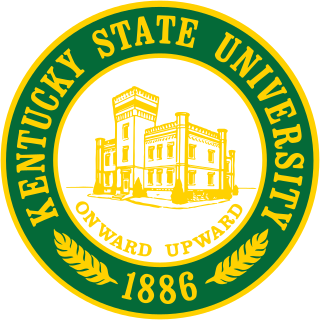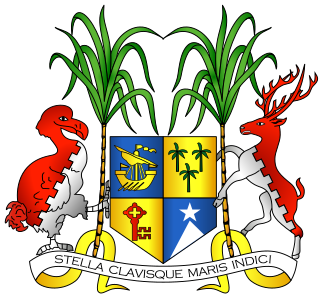
The University of Kentucky is a public land-grant research university in Lexington, Kentucky. Founded in 1865 by John Bryan Bowman as the Agricultural and Mechanical College of Kentucky, the university is one of the state's two land-grant universities. It is the institution with the highest enrollment in the state, with 32,710 students in the fall of 2022.
A nontraditional student is a term originating in North America, that refers to a category of students at colleges and universities. The term usually involves age and social characteristics. Nontraditional students are contrasted with traditional students.

Western Kentucky University is a public university in Bowling Green, Kentucky. It was founded by the Commonwealth of Kentucky in 1906, though its roots reach back a few decades earlier. It operates regional campuses in Glasgow, Elizabethtown-Fort Knox, and Owensboro. The main campus sits atop a hill overlooking the Barren River valley.

Northern Kentucky University is a public university in Highland Heights, Kentucky. Of its 15,000 students, over 10,000 are undergraduate students and nearly 5,000 are graduate students. Northern Kentucky University is the third largest university, behind the University of Cincinnati and Miami University, of Greater Cincinnati's four large universities and the youngest of Kentucky's eight public universities. Among the university's programs are the Salmon P. Chase College of Law and the College of Informatics.

Paul Edward Patton is an American politician who served as the 59th governor of Kentucky from 1995 to 2003. Because of a 1992 amendment to the Kentucky Constitution, he was the first governor eligible to run for a second term in office, since James Garrard, in 1800. Since 2013, he has been the chancellor of the University of Pikeville in Pikeville, Kentucky, after serving as its president from 2010 to 2013. He also served as chairman of the Kentucky Council on Postsecondary Education from 2009 to 2011.

Campbellsville University (CU) is a private Christian university in Campbellsville, Kentucky. It was founded as Russell Creek Academy and enrolls more than 12,000 students. The university offers associate, bachelor's, and master's degrees.

Kentucky State University is a public historically black land-grant university in Frankfort, Kentucky. Founded in 1886 as the State Normal School for Colored Persons, and becoming a land-grant college in 1890, KSU is the second-oldest state-supported institution of higher learning in Kentucky. In fall 2019, total undergraduate enrollment was 2,029 with a total graduate enrollment of 142.

Education in Mauritius is managed by the Ministry of Education & Human Resources, which controls the development and administration of state schools funded by government, but also has an advisory and supervisory role in respect of private schools. The Tertiary education is maintained by the Ministry of Tertiary Education, Science, Research and Technology. The government of Mauritius provides free education to its citizens from pre-primary to tertiary levels. Since July 2005, the government also introduced free transport for all students. Schooling is compulsory up to the age of 16. Mauritian students consistently rank top in the world each year for the Cambridge International O Level, International A and AS level examinations. Among sub-Saharan African countries, Mauritius has one of the highest literacy rates. The adult literacy rate was at 91.9% in 2022. According to the 2022 census, the proportion of people with higher education has increased to 8.8%. Mauritius was ranked 57th in the Global Innovation Index in 2023, 1st in Africa.
An online degree is an academic degree that can be earned primarily or entirely through the use of an Internet-connected computer, rather than attending college in a traditional campus setting. Improvements in technology, the increasing use of the Internet worldwide, and the need for people to have flexible school schedules while they are working have led to a proliferation of online colleges that award associate, bachelor's, master's, and doctoral degrees.

Madisonville Community College (MCC) is a public community college in Madisonville, Kentucky. It is one of 16 two-year, open-admissions colleges of the Kentucky Community and Technical College System (KCTCS). MCC was originally established as a member of the University of Kentucky's Community College System in 1968. In 2001, the college consolidated with Madisonville Technical College, itself originally established in 1937 as the Madisonville Area Trade School. MCC offers associate degree programs, as well as technical diplomas and certificates, with the overall purpose of making postsecondary educational opportunities available to Kentucky's citizens and workforce. MCC is accredited by the Southern Association of Colleges and Schools (SACS). In 2011, it was ranked among the nation's top 10% of community colleges by the Aspen Institute.

West Kentucky Community and Technical College (WKCTC) is a public community college in Paducah, Kentucky. It is part of the Kentucky Community and Technical College System (KCTCS) and was formed by the 2003 consolidation of Paducah Community College and West Kentucky Technical College. WKCTC is accredited by the Southern Association of Colleges and Schools, Commission on Colleges (SACSCOC).
Provision of education in the UAE began shortly after the establishment of the federation with the inception of the first university in Al Ain, Abu Dhabi, the United Arab Emirates University. Since then, the country has progressed with efforts of ensuring high literacy rates, modern programs and women's share in education. It works on improving its youths education which is why the agenda 2021 has been set. The UAE currently devotes approximately 25 percent of total federal government spending to education. As of 2019, the overall literacy rate is 96%.

Robert L. King is an American higher education leader and former Assistant Secretary for Postsecondary Education at the U.S. Department of Education. He previously served as president of the Kentucky Council on Postsecondary Education. Other notable positions include having served Monroe County, New York Executive and as Chancellor of the State University of New York. On July 11, 2019, He was confirmed by the United States Senate as Assistant Secretary for Postsecondary Education.
The Kentucky Council on Postsecondary Education coordinates change and improvement in Kentucky's postsecondary education system as directed by the Kentucky Postsecondary Education Improvement Act of 1997. The Council is a statewide coordinating agency with 16 members: 14 citizens, one faculty member and one student appointed by the Governor; the Commissioner of Education is an ex officio member.

Ryan Francis Quarles is president of the Kentucky Community and Technical College System. An American Republican politician, he served as Agriculture Commissioner of Kentucky from 2016 to 2024 and in the Kentucky House of Representatives from 2011 to 2016.

National University is a private university with its headquarters in San Diego, California. Founded in 1971, National University offers academic degree programs at campuses throughout California, a satellite campus in Nevada, and various programs online. Programs at National University are designed for adult learners. On-campus classes are typically blended learning courses, concentrated to four weeks or on weeknights with occasional Saturday classes. The university uses asynchronous learning and real-time virtual classrooms for its online programs.

The DO-IT Center is based at the University of Washington (UW) in Seattle, Washington. Founded in 1992, DO-IT’s mission is to increase the successful participation of people with disabilities in postsecondary education and careers, in STEM fields and careers, and in computing fields and careers throughout the U.S. It directs the national AccessSTEM program, and co-directs the national AccessComputing Alliance focused on engaging people with disabilities in computing fields.
Aaron Thompson is an American academic and the fourth president of the Kentucky Council on Postsecondary Education. Thompson is noted as the first black and native Kentuckian to hold the position.














